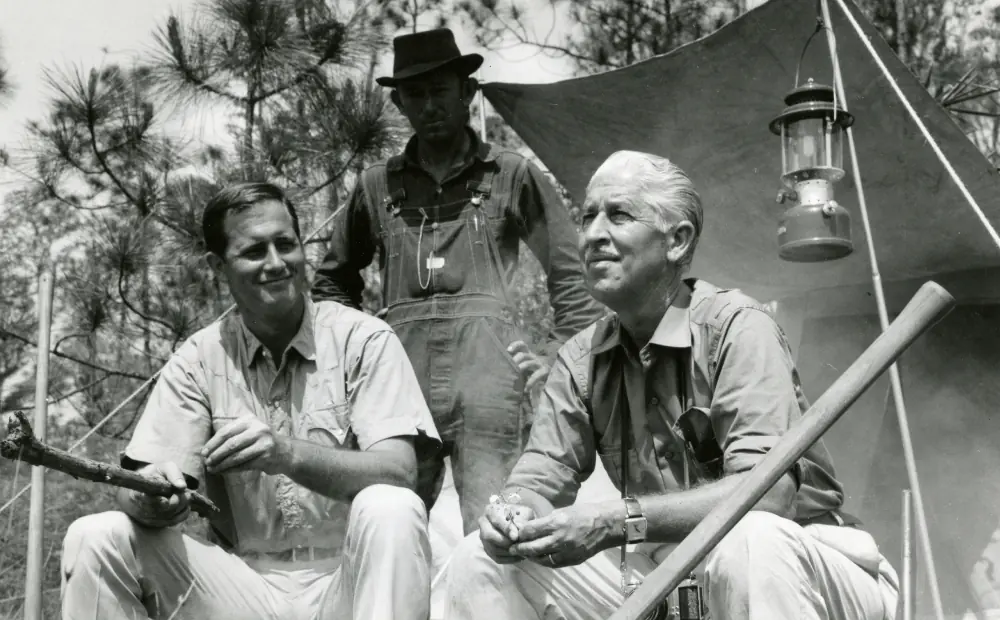0:00
Hundreds of years ago, a tiny, charismatic little weasel called the Black footed Ferret roamed across the American Prairie by the hundreds of thousands.
0:09
Black footed ferrets existed across a very large part of the western United States and edged into Canada and Mexico as well.
0:17
They live in Prairie dog burrows, and they eat Prairie dogs.
0:21
They rely 90% on Prairie dogs for their survival, food and shelter.
0:25
Female requires about 400 Prairie dogs a year to see her and her kids alive.
0:32
But habitat loss and disease nearly eradicated Prairie dogs from North America, and without their primary food source, black footed ferrets quickly disappeared from the landscape.
0:43
By the mid 20th century, they were even believed to be extinct.
0:48
Today, only a few isolated and fragile populations remain.
0:54
Tonight we've traveled to the Rocky Mountain Arsenal National Refuge in Colorado.
0:59
Environmental educator Jeff Ewalt is here to assist the US Fish and Wildlife Service.
1:05
We're counting the number of black footed ferrets living here.
1:09
So what are we trying to accomplish tonight?
1:11
So our fall ferret surveys are utmost importance to the refuge.
1:15
We use these numbers to determine population densities, to assess site and national recovery goals.
1:23
What's the rest of the process we'll be doing today?
1:25
We are going to be spotlighting the entire area.
1:28
They are typically underground all day, every day.
1:32
We have about a 5-to-6-hour chunk of time where they're going to pop their heads up and give us an opportunity to take a look at them.
1:39
We're looking forward to seeing something out there tonight.
1:41
We'll do our best to spot them with your lights.
1:43
There you go.
1:45
Keep just a constant scanning going.
1:49
Almost immediately we spot some wildlife.
1:52
There's some eyes there.
1:54
2 sets of eyes.
1:55
We got some eyes on them, right, dear?
1:59
And there's another one.
2:00
Yeah.
2:01
Notice how they're just staring you down.
2:03
That's uncommon for a ferret.
2:05
Typically, you'll see them pop up, pop back down, move around a little bit.
2:11
But if they're just staying in one spot, that's almost certainly a deer that sort of like a deer in the headlights.
2:17
Exactly.
2:18
Yeah.
2:19
The deer are out tonight in numbers, and we catch plenty in our beams along with other creatures prowling through the night.
2:29
Yeah, definitely coyote.
2:30
We just have a pack of coyotes in this area.
2:36
Wait a minute, it's a Bunny.
2:41
It says a lot for our restoration site.
2:44
We're beginning to see these animals finally come around after decades of not being present on the landscapes.
2:54
It's always really exciting to see.
2:56
Our search is ultimately unsuccessful, but other members of the team managed to locate a black footed ferret and carefully capture the animal at a mobile lab.
3:07
It receives vital vaccinations against harmful disease.
3:11
This conservation work is tedious but critical to keep this species safe.
3:16
She looks great.
3:17
Yeah, she looks great.
3:17
A very good-sized kid.
3:19
That's incredible.
3:22
Finally, after receiving a clean bill of health from the biologist, this animal is ready for release.
3:30
So this little kid is vaccinated, healthy, looks really good and ready to go back to this hole in the wild.
3:37
And because of that vaccination, I think stands a very good chance of being one of the remaining black footed ferrets.
3:43
Let's get this ferret back into the hole so we can live it's ferret life.
3:46
All right, let's do it.
3:49
Let's see your go.
3:53
She's going to smell that.
3:54
This is it.
3:55
That burrow.
3:56
Look at that.
3:56
She's checking it out, taking around a little bit, and down she goes.
4:01
Once thought to be an extinct species, thanks to the hard work of dedicated men and women, this unique mammal has been given a second chance.












